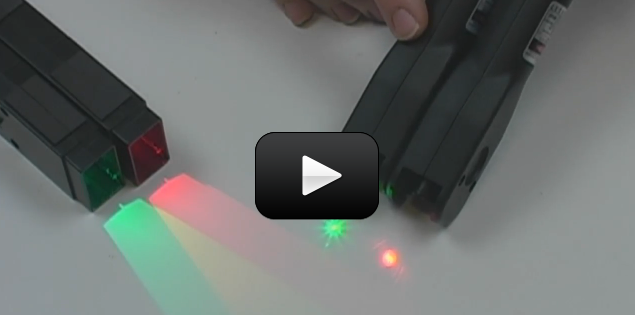Laser light is collimated, meaning that it travels in parallel rays. Here’s a really cool experiment that will show you the difference between a non-collimated light, like from a flashlight and collimated light from a laser.
Ordinary light from a light bulb diverges as it travels. It spreads out and covers a larger and larger area the further out you go. A laser has little to no divergence, so we way that laser light is collimated.
[am4show have=’p8;p9;p19;p46;p89;p99;’ guest_error=’Guest error message’ user_error=’User error message’ ]
Materials:
- flashlight
- laser
- ruler
- pencil
- piece of paper
Download your student worksheet here!
This is a quick overview of what a laser is, and why you can’t make a laser from a flashlight beam.
- Cover the end of the flashlight with clear tape. Paint the tape with red nail polish.
- Stand close to the wall and shine both the laser and the flashlight at the wall.
- Now slowly move backwards. What happens to the laser and the flashlight light on the wall?
The laser dot doesn’t change size (or if it does, it’s not much), but the pool of light from the flashlight increases in size. The light from the laser travels in the same direction in a straight line, called collimated light. The flashlight beam diverges, or spreads out.
[/am4show]

